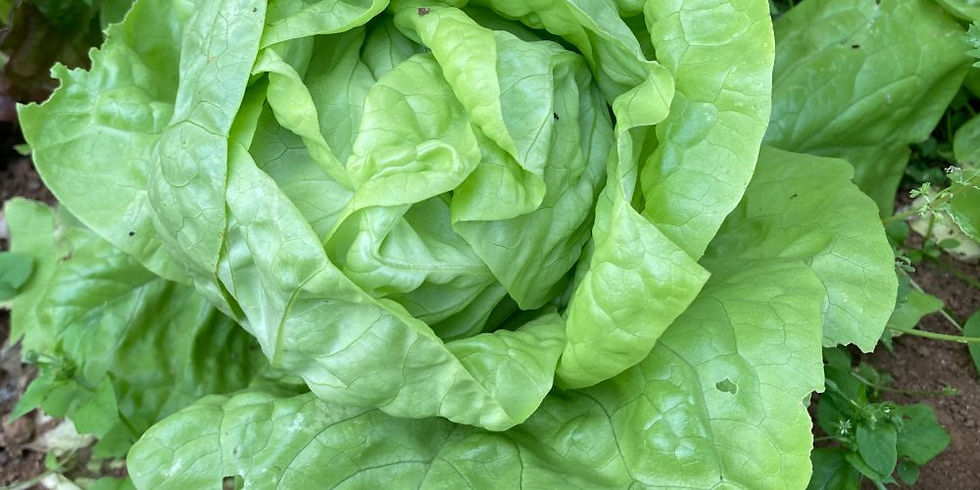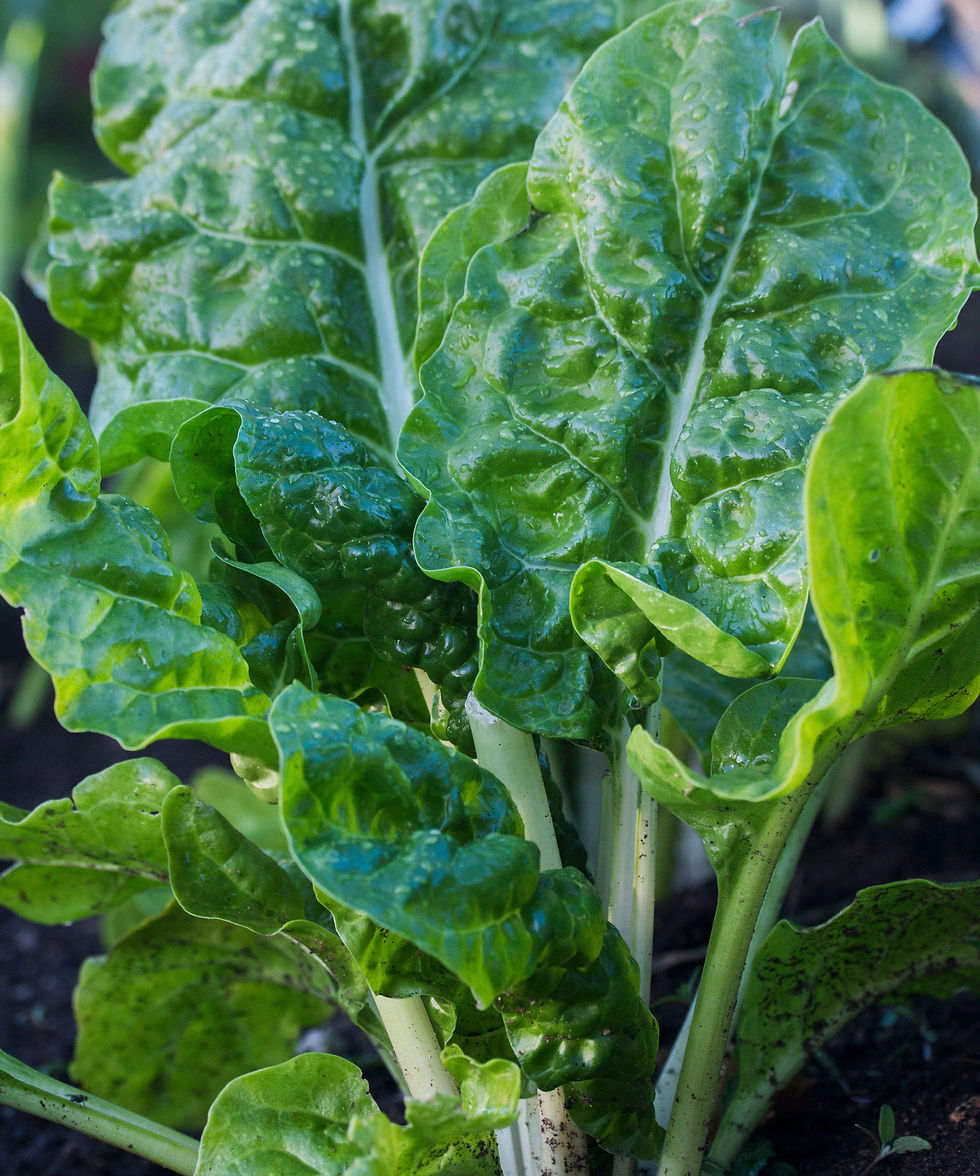What to plant in November
- artvs3
- 19 hours ago
- 4 min read
In October, we discussed bare-root planting. This month, we are continuing the same theme. Rhubarb (Rheum x hybridum), in it’s bare-root state, when the stems and leaves die down over winter, is known as a crown. A hardy perennial that lives for many years and thrives in even the coldest sites, rhubarb is low maintenance and extremely easy to grow.

Dormant rhubarb crowns can be bought from garden centres, but they are also available by mail-order. You should always obtain your rhubarb from a reputable source to ensure that you are getting a disease-free plant. Mature rhubarb plants require plenty of space, forming a large leafy clump 1.5m wide or more, and established clumps should be divided about every five years, in late autumn or winter, to keep them cropping well. If you’re lucky, you may know someone with part of a plant that needs re-homing!

Rhubarb grows best in an open, sunny site with fertile, moisture-retentive soil that doesn't get waterlogged, but it will cope in light shade. It’s best not to plant it in a site prone to late frosts, as the young stems may be damaged but late-cropping varieties are the best choice for cold sites.
Prepare the site by removing weeds and adding well-rotted organic matter. Dig a hole that’s just a little wider than the root system and position the plant so the tip of the crown, or the point where the leaves emerge, is just above the soil surface. Back-fill around the roots with soil, firm in, then water well. If planting more than one, space them 75–90cm (30–35in) apart. You must water regularly during dry spells throughout its first growing season, until it’s well rooted, but once established, rhubarb rarely needs watering, so you should only need to water during prolonged dry periods. Growth will slow down and even stop if conditions are too hot and dry.

If your soil is heavy clay and/or has poor drainage, plant your rhubarb in raised beds or large containers. Compact varieties are best for growing in a container. Your container needs to be at least 50cm (20in) deep and wide, with plenty of drainage holes. Choose a peat-free soil-based compost and position the plant so its main growth bud or the point where the leaf stalks emerge is just above the compost surface. Be prepared to water regularly during spring and summer as the compost will dry out quickly. You should aim to keep it moist but never waterlogged, as waterlogged compost can lead to roots rotting.

Rhubarb is hardy and needs no protection over winter. In fact, exposure of the growing points to cold is necessary to trigger new growth in spring. Established rhubarb needs little maintenance, apart from removing flower stems and faded leaves to prevent them weakening the plant, and mulching in spring. Mulching with well-rotted organic matter in a layer about 7cm (2½in) deep should provide sufficient nutrients for your rhubarb to grow well, retaining moisture in the soil and suppressing weed growth. Take care not to bury the crown, as that could cause rotting. If you have poor soil and growth is slow, applying a high-nitrogen, organic-based fertiliser, in spring or summer, will boost growth.
Although growing rhubarb is easy, it’s not the best plant for an impatient gardener. In order to allow the plant to get well established, you shouldn’t harvest any stems in the first year after planting, and only a few in the second, but from the third year onwards you can take up to a third of the stalks at any one time.

Leaf stalks are usually harvested from April or May. Although the stems can remain edible and tasty through summer, it’s best to stop harvesting in late June or early July, so you don’t weaken the plant. Choose a young stalk about 30cm (1ft) long, with a leaf that has only just fully opened. Hold the stalk at the base and twist gently to ease it out of the ground. Try to avoid snapping it off, and don’t cut it, as you’ll leave a stump that is prone to rotting. Then remove the leaf, which is not edible. The flavour of rhubarb varies in sweetness depending on the age of the stems and the variety.

Plants can be covered in winter to produce an early crop of “forced” delicious blanched stems which have formed in the dark. If you want to force your rhubarb, you should choose an early cropping variety. Cover your plant with a forcing jar, tall bucket or dustbin in mid-winter. Only use a strong, healthy plant and avoid forcing the same plant in consecutive years. Once stalks appear, they will grow quickly so check them regularly. Sweet, tender, pale stalks will be about 30cm long and ready to harvest around four to eight weeks after being covered. After harvesting all the forced stalks, remove the covering to allow light to reach the crown, and the plant’s subsequent stems to develop normally, but don’t harvest any more stalks from that plant until the following year.

Although rhubarb is a vegetable rather than a fruit, it's traditionally eaten as a dessert, baked in pies and crumbles, but you can also use it to make tangy chutneys and savoury sauces. Rhubarb is best used fresh, but can be frozen or stored in the fridge for a couple of weeks. Flavour, sweetness, vigour, harvesting time and colour differ between varieties, with some leaf stalks ranging from rich ruby to pale pink or blush-green.

Here are some varieties you may want to try:
Rheum × hybridum 'Raspberry Red'
A prolific early variety producing heavy crops of rich red stems with a sweet flavour, even without forcing. Ready for harvest from April to June. Suitable for forcing.

Rheum × hybridum 'Timperley Early'
A high-yielding first early cultivar. The thick stems are deep red at the base, passing to light green with red flecks; flesh is green

Rheum × hybridum 'Victoria'
An old, reliable late maincrop variety, with mid-sized green stalks flushed with red, and a robust flavour. Ready to harvest from late May. Suitable for late forcing

Rheum × hybridum 'Fulton's Strawberry Surprise'
A vigorous maincrop variety with bright red stems and good, balanced flavour. Ready for harvest in May and June

.png)



Comments